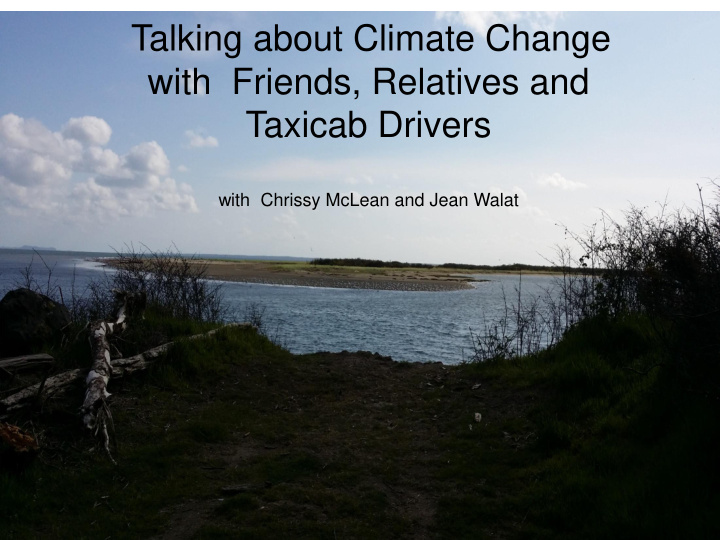



Talking about Climate Change with Friends, Relatives and Taxicab Drivers with Chrissy McLean and Jean Walat
Everyone can have a role in helping the public understand how climate change happens, and knowing what approaches have the most potential for making a difference.
Gallup World Poll
NNOCCI was founded as a partnership of the New England Aquarium, Woods Hole Oceanographic Institute, and Frameworks Institute • NNOCCI was funded by NSF to train >150 zoos, aquariums, and science centers to use Strategic Framing to explain climate change to the public. • NNOCCI is now using regional coordinators to continue the work after initial funded ended.
Strategic Framing is… A research-based approach that is proven to: – help the public understand the mechanisms of climate change – show the public how they can be ‘heroes’ of the climate change and ocean conservation story by providing paths to engagement – help explain what climate change is NOT and what action is NOT effective – leave the listener with a sense of hope
What is a frame? The way a story is told – the deliberate, selective use of particular values, symbols, metaphors, and messengers- which in turn trigger shared cultural mental models.
8 essentials of Framing Climate Change Conversations-1 • Tone: reasonable and not crisis • Values: “why should I care”— most important • Cultural Models: “what do I bring to it” • Explanatory Metaphors: making an abstract idea concrete and “sticky” • Causal Chains: connecting the dots from cause to effects. Creates the understanding for considering multiple solutions.
8 essentials of Framing Climate Change Conversations-2 • Community Level Solutions: Solutions that match the scale of the problem, activates the ‘we’, rather than focusing on individual solutions • Social Math: Gives context to numbers in a memorable and relevant way • Bridging & Pivoting: Helps navigate around unproductive ideas and conversations to more productive framing
Avoiding the Swamp… of excuses, dead ends, and misunderstandings
Explaining Climate Change using metaphors and personal values
The Heat Trapping Blanket When we burn fossil fuels like coal and gas, we pump more and more carbon dioxide into the atmosphere, and this build-up creates a blanket effect, trapping in heat around the world. The ocean absorbs much of that excess heat, making it warmer, too.
Value: Responsible Management Just as we value taking responsibility for managing our homes and families, taking practical, common sense steps to address environmental problems is in the best interest of future generations. • Handle problems before they get worse • Use evidence, an open mind, and step-by-step approaches to addressing climate change.
Collective Level Solutions Becoming a climate action perfectionist in your own household is less important (and a distraction) from taking action with your community, climate action organizations, state and federal govts.
Collective level (policy) solutions • Put a price on dumping heat-trapping gases into the air • Improve energy efficiency • Greatly increase research and use of low or non- emitting energy sources & carbon capture • Stop forest loss • Slow population growth • Reduce/stop investment in fossil fuel infrastructure
Collective Level Solutions What Kind of Changemaker Are You?
The End Thanks to “The Story of Stuff” storyofstuff.org
Thank you! Questions? Comments? jmwalat@gmail.com chrissyandkevin@gmail.com
Recommend
More recommend